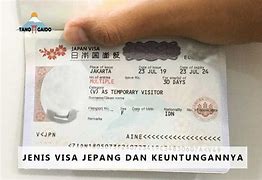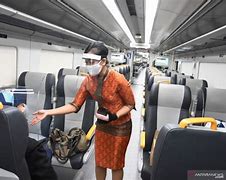
Visa Visitor Jepang
Entering the United States
A visa does not guarantee entry into the United States. A visa only allows a foreign citizen to travel to a U.S. port-of-entry (generally an airport or land border) and request permission to enter the United States. The Department of Homeland Security (DHS), U.S. Customs and Border Protection (CBP) officials at the port of entry have authority to permit or deny admission to the United States.
After you present your passport, visa, and DS-2019 at the port-of-entry, a CBP official will make this decision. Once you are allowed to enter the United States, the CBP official will provide an admission stamp or paper Form I-94, Arrival/Departure Record.
Learn about procedures for students (with F or M visas) or exchange visitors (J Visas) entering the United States on the CBP website under Arrival Procedures for Students or Exchange Visitors. Visit the CBP website to find out about entering the United States. Learn about rules, restrictions, and what food and agricultural products are restricted. You can also find information about other goods that are restricted or prohibited.
If your plans change while in the United States (for example, you receive a job offer), you may be able to request a change in your nonimmigrant status through U.S. Citizenship and Immigration Services (USCIS). See Change My Nonimmigrant Status on the USCIS website to learn more.
While you are in the United States, receiving a change of status from USCIS does not require you to apply for a new visa. However, once you depart the United States, you must apply for a visa at a U.S. Embassy or Consulate in the appropriate category for your travel.
Statistical information about visitors to Australia is gathered on their arrival and departure from airports and seaports throughout Australia.
The reports published on this page are not accessible. If you would like an alternative accessible format of any of the documents, email [email protected]
Multiple entry Visitor Visa
If you have a multiple entry visa, you can visit New Zealand as a tourist as many times as you want and stay for a total of up to 6 months in a 12-month period.
The 12-month period is calculated back from the last day you intend to be in New Zealand (your intended departure date).
For example, if the last day you intend to be in New Zealand is 1 December 2024, then your 12-month period will begin on 1 December 2023.
To be eligible, you must have been out of New Zealand for at least 9 months in the 18-month period before you apply.
Pertanyaan yang Sering Diajukan
Lý do khiến bạn bị từ visa visitor Canada là gì?
Vì sao bạn lại bị từ chối cấp Visa visitor Canada?
Trang bị thêm ngoại ngữ
Mặc dù bạn chỉ đến Canada để du lịch hay thăm người thân thì việc trang bị cho mình vốn ngoại ngữ là rất cần thiết. Điều đó không chỉ giúp bạn dễ dàng giao lưu hoặc hỏi văn hóa của Canada mà còn giúp tăng tỷ lệ xét duyệt hồ sơ visa visitor.
Thông tin chứng minh tài chính bị sai lệch
Một trong những lý do bị từ chối cấp visa visitor Canada đó chính là việc chứng minh tài chính cá nhân không trung thực. Nhiều đương đơn sẽ liên hệ các công ty làm giả thông tin tài chính nhưng bạn biết đó không gì là có thể làm giả được. Khi bị Đại sứ quán phát hiện ra không những bạn bị từ chối hồ sơ xét duyệt visa visitor Canada. Mà điều này còn để lại ấn tượng không tốt khiến việc xin cấp visa Canada sau này trở nên khó khăn hơn. Do đó hãy luôn trung thực với các loại giấy tờ, hồ sơ, thủ tục liên quan để dễ dàng được cấp visa visitor Canada hơn bạn nhé!
Attend Your Visa Interview
A consular officer will interview you to determine whether you are qualified to receive an exchange visitor visa. You must establish that you meet the requirements under U.S. law to receive a visa.
Ink-free, digital fingerprint scans are taken as part of the application process. They are usually taken during your interview, but this varies based on location.
After your visa interview, the consular officer may determine that your application requires further administrative processing. The consular officer will inform you if this is required.
After your visa is approved, you may need to pay a visa issuance fee (if applicable). You will also need to make arrangements for your passport and visa to be returned to you. Review the visa processing times to learn more.
Complete the Online Visa Application
Two-year Home-Country Physical Presence Requirement
If you participate in an Exchange Visitor Program and meet one of the criteria below, at the end of your program you must return to your home country for two years. This requirement under immigration law is based on section 212(e) of the Immigration and Nationality Act.
Conditions for the Two-year Home-country Physical Presence Requirement - J-visa holders must follow the two-year home-country physical presence requirement if the following is true:
Restrictions - If the two-year home-country physical presence requirement applies to you, you must return to your home country for a cumulative total period of at least two years before you can do any of the following:
Waiver of Two Year Home-Country Physical Presence Rule - If you are subject to the requirement to return to your home country, you may pursue a waiver of the requirement. Select Waiver of the Exchange Visitor Two-Year Home-Country Physical Presence Requirement to learn more about this requirement and how to request a waiver.
Visitor visa program report
The Visitor Visa report is a bi-annual publication that provides data on visitor visas.



